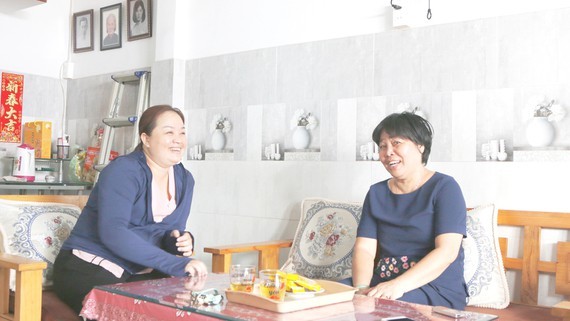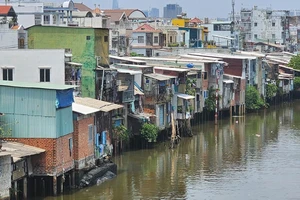
Early in 2016, HCMC has more than 67,000 poor households accounting for 3.36 percent of the country’s population and over 48,100 near-poor households accounting for 2.4 percent.
At the end of 2018, the number of poverty-stricken households was approximately 3,800 and nearly 23,000 near-poor households.
From 2019, the city continued to implement sustainable poverty alleviation program of the tenure 2016-2020 to have no poor households by raising income line of 27,500 poor households and 32,000 near-poor households.
At the end of 2019, the number of poor and near-poor households was nearly 9,700 and 23,000 respectively or under 1 percent.
Therefore, the city basically finish its national targeted program on sustainable poverty reduction 2019-2020 (residents’ annual average income of at least VND 28 million (US$1,200) per capita annually by the end of 2020.
Director of the city Department of Labor, Invalids and Social Affairs Le Minh Tan said that 5 districts and 85 wards have no more underprivileged households with annual average income below VND28 28 million (US$1,200) per capita a year.
Moreover, district 5 and 22 wards have no near-poor families, he revealed. The city can accomplish its targeted program on sustainable poverty reduction thanks to the efforts’ of the entire machinery of state, the community and the poor.
As the country’s most prosperous city, the nature of poverty in the city has changed over the past decade. From 1992 to 2015, city authorities opted to utilize an alternative tool: the multi-dimensional poverty approach to measure poverty based on annual income and underprivileged people’s access to healthcare, education, employment, good living conditions and information.
The city began using multi-dimensional poverty measures in 2016 in an aim to achieve sustainable poverty reduction and access to basic social services by the poor.
Director Tan said that poverty reduction policies and measures gradually cut allowances for poor and near-poor households but support them to do business in a bid to escape their poverty thoroughly.
District administrations have adopted poverty reduction programs effectively by connecting enterprises and poor laborers, giving scholarships to children of low-income families, gratis supply of seedlings and such.
Additionally, for the period 2016-2020, HCMC has mobilized more than VND7 trillion for the sustainable poverty reduction program to provide to poor and near-poor households; of which, VND5,200 billion for preferential loans and small credit. Destitute and near-poor households borrowing the preferential loans escaped their poverty.
Last but not least, the city issued 928, 000 medical insurance cards to moneyless households and families living in near poverty lines as well as built 1,765 charitable houses and 2,470 houses in poor repair. More than 150,000 good students of poor and near-poor families were exempted from tuition fees.
























